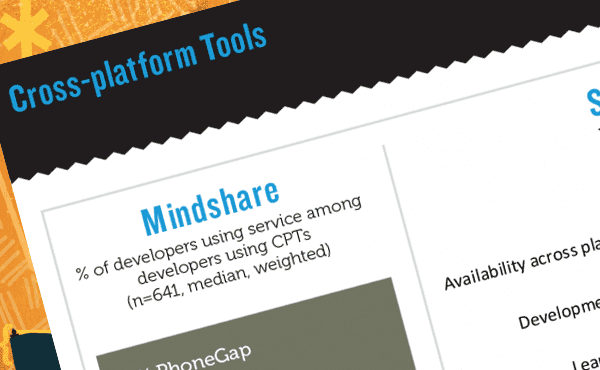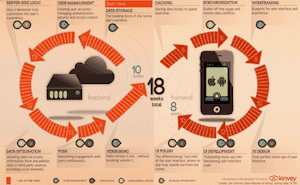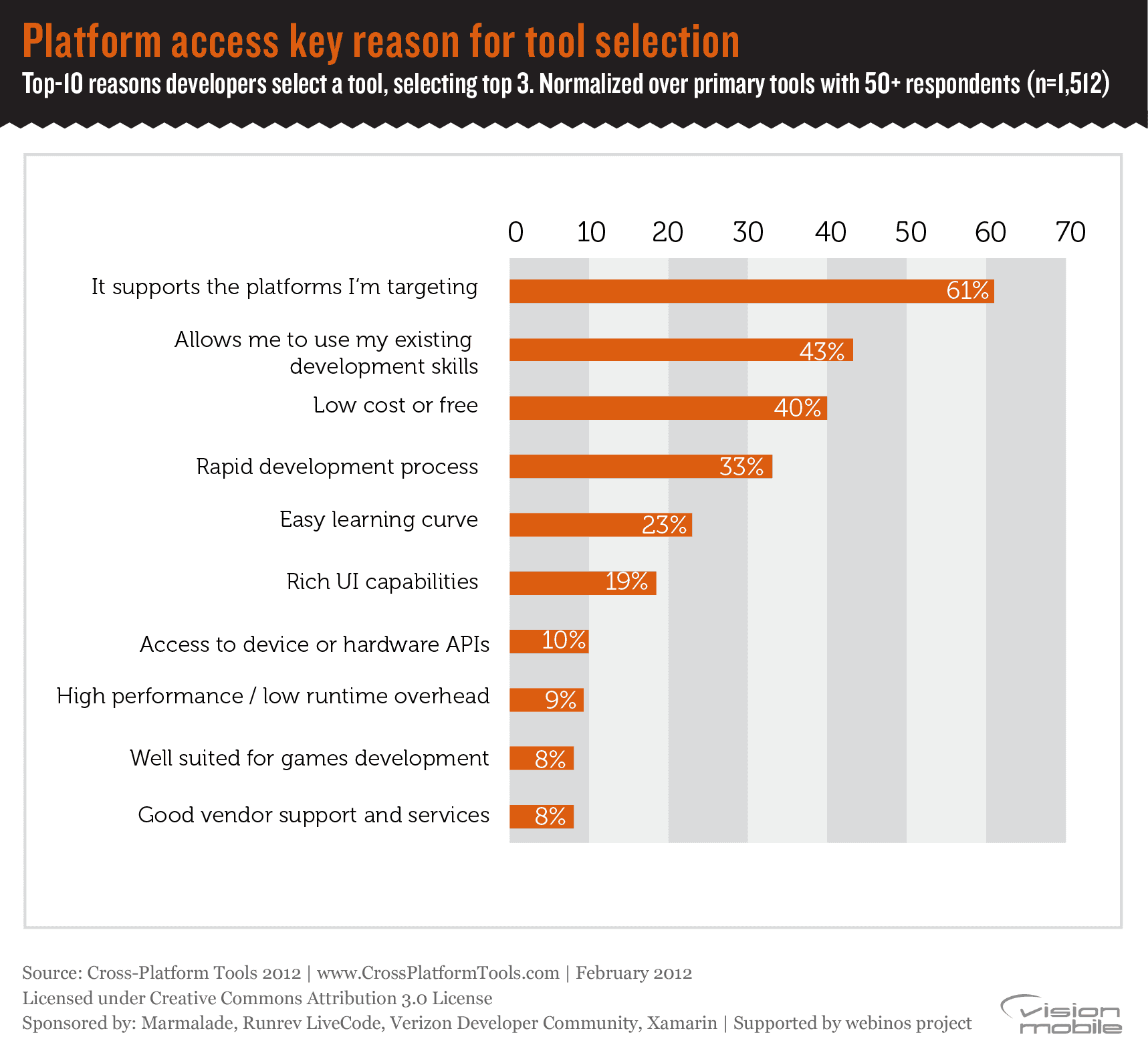Recent Posts of Time-to-Market

24 July, 2013
Creating versions of an app for multiple platforms (at least iOS & Android) is an increasingly common requirement. Building and maintaining native code for every platform supported is both difficult and expensive. Cross-Platform Tools (CPTs) offer a solution to this problem by enabling sharing of code across platforms and in many cases a single code base can target multiple platforms. With such significant cost savings available, why don’t all developers use CPTs?

14 May, 2013
Using a Backend-as-a-Service (BaaS) can reduce development cost and time-to-market. It’s a simple way of getting a highly scalable backend solution without significant upfront investment. In a world where an app that hits the store top charts might gain more than a million new users before you complete your next iteration of development this is worthy of serious consideration.

30 January, 2013
Cross-platform tools (CPTs) address real challenges for developers. Cross-platform tools allow developers to create applications for multiple platforms – usually mobile, but increasingly tablets or TV screens – from almost the same codebase or from within the same design tool. CPTs reduce the cost of platform fragmentation and allow developers to target new platforms at […]

11 January, 2013
Backend-as-a-Service (Baas) provider Kinvey published an interesting infographic on the average time taken to build an iOS or Android app (with a backend service) this week. The data comes from a survey of 100 developers with their estimates averaged. For apps with relatively complex backend requirements as featured in the survey, our simple analysis suggests developers could save 45% of the effort required to ship a Minimum Viable Product by using a BaaS.

20 December, 2012
Cross-platform tools (CPTs) are a class of developer tool that aim to enable a single implementation of application functionality to run across multiple platforms. If that definition seems very broad it’s because the category covers a wide range of use cases, technology approaches and forms of app deployment. In our analysis of this sector from February 2012 we identified over 100 tools across three forms of app deployment (native vs. web vs. hybrid) and five different technology approaches

20 December, 2012
With the wide selection of cross-platform development tool (CPTs) available in the market, how should a developer select a development tool? The exact selection criteria will vary depending on the project and the individual developers involved. However, it’s valuable to look at the criteria other developers have used to select development tool and, even more […]

03 December, 2012
One question that divides opinion among developers is when to start marketing your app. Some say if you start marketing too soon, the early interest you create will dissipate before you actually have something to sell. Others argue that you can’t start talking about your app soon enough, build a following of early adopters and […]

20 November, 2012
As we showed in our Developer Economics 2012 survey, there is a massive gap between the number of developers creating applications for local languages (other than English) and the demand for local language content. For many app types, app localization is only a relatively small incremental investment on top of the original app build costs […]

07 November, 2012
Many of the most engaging and popular apps connect to cloud services which either regularly deliver new content, enable users to interact with one another or both. Unlike a standalone application, such apps can incur ongoing hosting costs throughout their active usage life. Ideally your revenue model should mirror the cost structure. Using a Backend-as-a-Service […]

06 November, 2012
There’s a lot of buzz about Lean Startups in the software community in general and amongst mobile developers in particular. How lean a startup can be is strongly influenced by the tools and processes available on their chosen platform. Which platforms enable the leanest product development processes? How and why does lean framework matter? Why […]